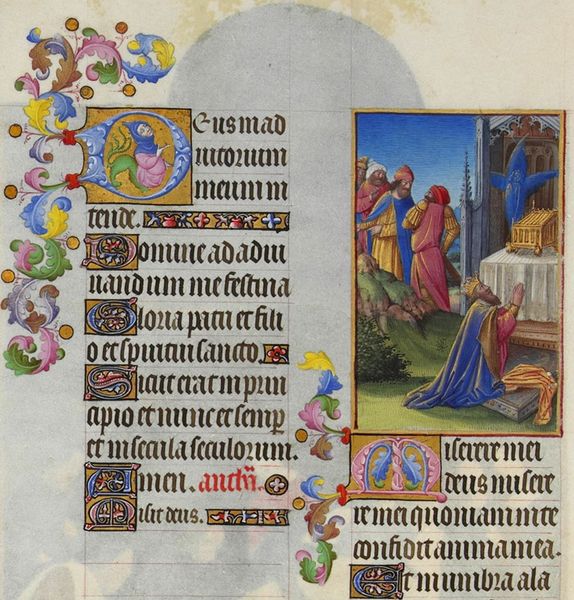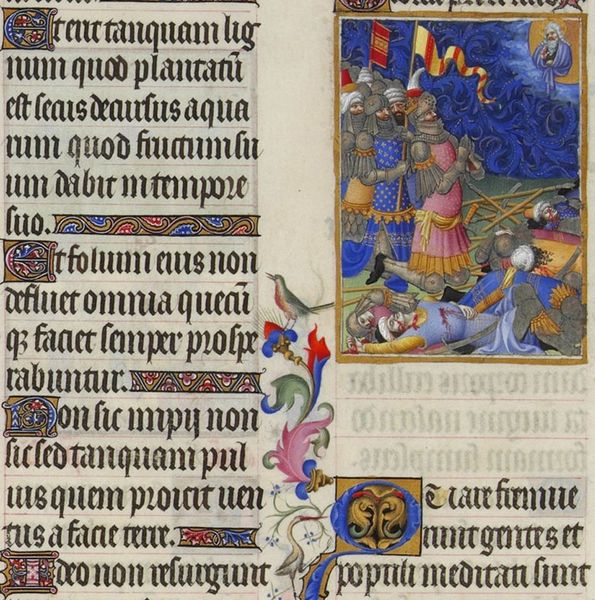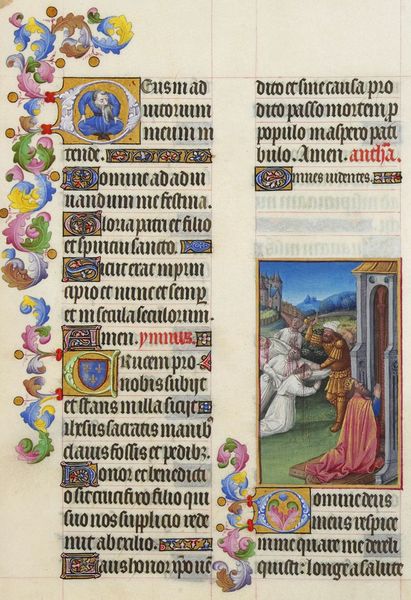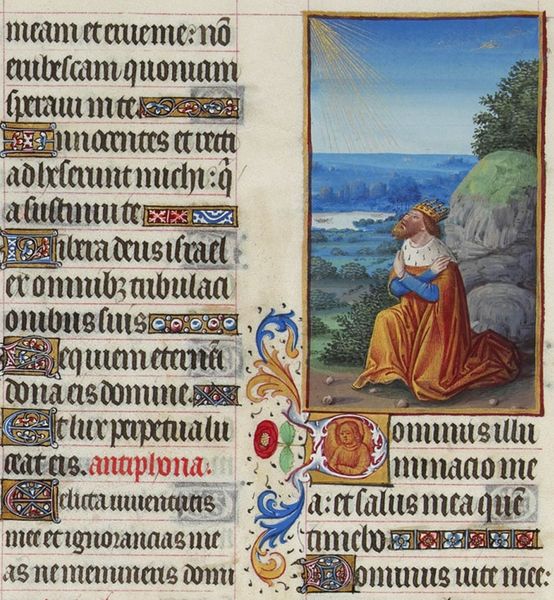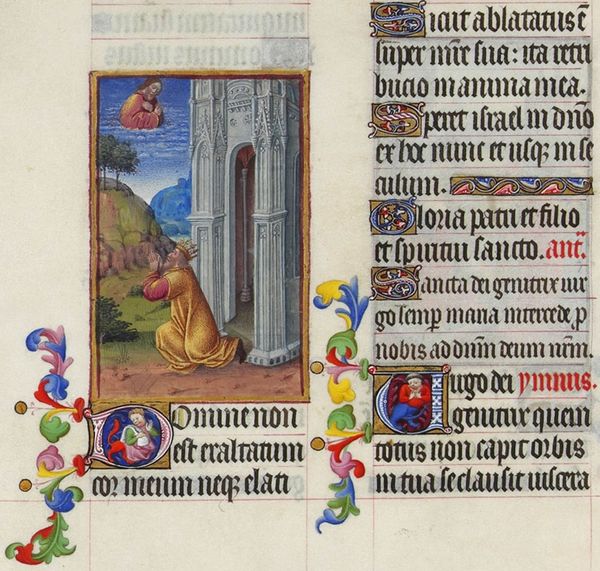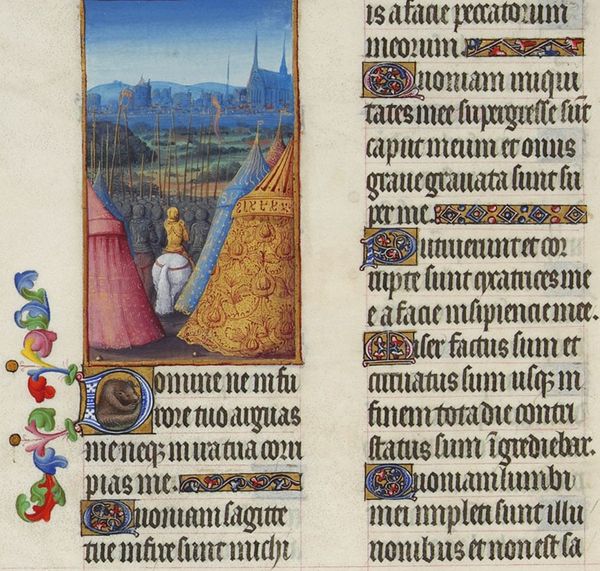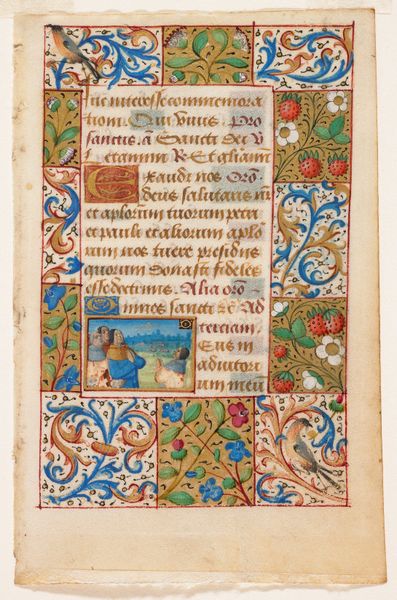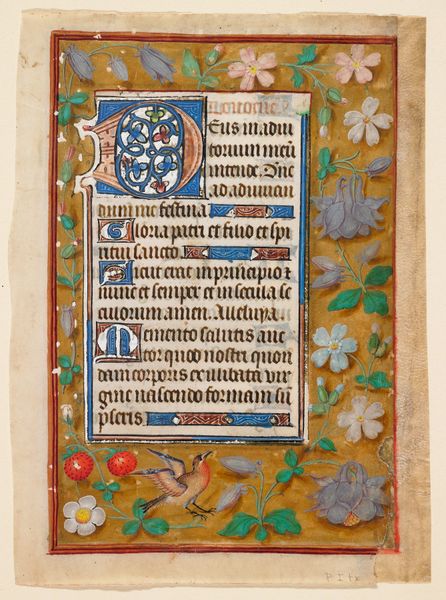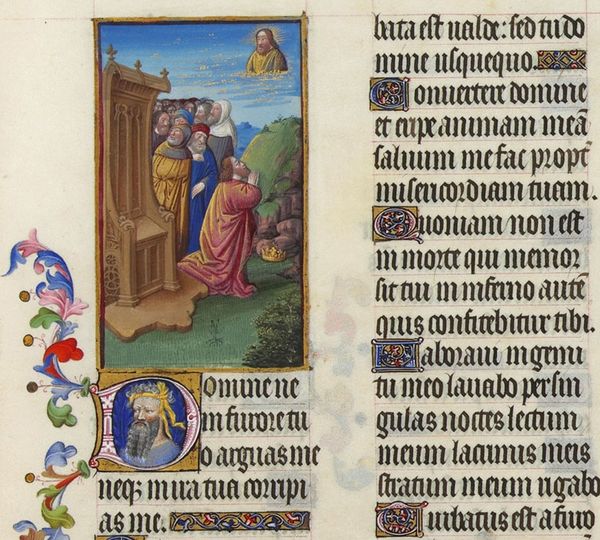
#
water colours
#
traditional media
#
text
#
personal sketchbook
#
coloured pencil
#
sketchbook drawing
#
watercolour bleed
#
watercolour illustration
#
cartoon carciture
#
sketchbook art
#
watercolor
Copyright: Public domain
Editor: Here we have “Judas Hangs Himself” by the Limbourg brothers, rendered in watercolour. It’s striking how this grim subject is depicted within the otherwise opulent illumination of the manuscript. I am intrigued by its juxtaposition next to decorative letters. What can you tell us about this image and its broader context? Curator: This image appears in a prayer book, where individual images and personal interpretation play a huge role. Notice how Judas isn’t glorified here. Rather, his death serves as a visual sermon embedded within the text itself, highlighting the consequences of his betrayal. Editor: That's a clever point. The scene of Judas’s demise seems stark and small against the highly decorated and colorful elements of the page, as if marginalized from it, which highlights its historical importance. Can you say more about the placement of the image in contrast to its religious and historical significance? Curator: Yes, observe the relationship between text and image, and you may think that such depictions had complex political and theological uses. The depiction of Judas's death as ignominious could’ve served specific social and political goals, perhaps justifying existing social hierarchies or demonizing particular groups in medieval society. Do you see how the placement in this personal prayer book is an unusual public performance, using this visual rhetoric? Editor: I never considered that! It really shifts how I interpret the work. Curator: Exactly. What we are seeing isn't just art for art's sake. It’s art being employed to reinforce certain power structures. It reveals how art throughout history actively took part in cultural and institutional narratives. Editor: So, analyzing the placement and symbolism can tell us a lot about the power dynamics at play in the late medieval period. That’s fascinating. Curator: It encourages us to view art as part of the broader tapestry of human history, where its public and social life really affects not just what's painted but what it is supposed to make the spectator do. Editor: Thank you. I will definitely look at art in this light going forward.
Comments
No comments
Be the first to comment and join the conversation on the ultimate creative platform.

